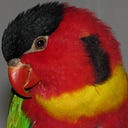Element of the week: Cobalt
Cobalt: a beautiful element that is bad news for beer drinkers
by GrrlScientist for The Guardian| @GrrlScientist
Today’s element is cobalt, lovely cobalt! This element is known by the symbol, Co, and the atomic number 27. As you can see in the image above, cobalt looks much like its sister transition metals, being silvery-grey, shiny and solid at room temperature. Its name comes from the German, kobold ore, for goblin ore, because it gave off poisonous arsenic-containing fumes upon smelting, and contained few (known) metals. But despite miners’ dislike of cobalt, it has been known and widely appreciated since the Bronze Age because it provides a lovely and distinctive blue colour to jewellery and paints, and of course, it is the basis for cobalt-blue glass.
Today, cobalt is used in a variety of important ways as the Professor mentioned in the video, but I am more interested in its biological importance and of course, in its lovely palette of colours.
As I already mentioned, cobalt is known for blue colouring: cobalt silicate and cobalt(II) aluminate (CoAl2O4, “cobalt blue”) provide a distinctive deep blue colour to glass, ceramics, inks, paints and other substances. In the image on the left are a group of lovely cobalt blue glassware. Cobalt was added to the glass to protect the liquids it might contain from damaging light rays
But like its sister transition metals, cobalt can assume a number of beautiful colours besides blue. When cobalt is combined with different halide partners, its anhydrides are colour-coded, for example: cobalt(II) fluoride (CoF2) is pink; cobalt(II) bromide (CoBr2) is green; cobalt(II) iodide (CoI2) is a very dark blue-black; and perhaps the most interesting of all is cobalt(II) chloride (CoCl2), which is blue whilst its hydrate is red. Just for fun, here’s a video that captures the colour changes in an aqueous solution of CoCl2:
Cobalt is not found in its elemental state in the wild, but traces of cobalt are found in mostly everything, from rocks to bacteria, fungi, algae, plants, animals and even in you and me. Cobalt is an essential trace element and is the critical ingredient for the coenzyme, cobalamin, which is probably more familiar to you as vitamin B12 (for you trivia buffs, this is only vitamin that contains a metal ion). This vitamin is manufactured for us by our friendly gut bacteria.
One peculiar story that I ran across whilst researching this piece is that cobalt compounds were added to beer in Canada in 1966 because it made beer foam last longer. Unfortunately, none of the corporate types who allowed this to happen paused to think that this may potentially be dangerous, possibly resulting in consumption of large doses of cobalt, which might be toxic. And sure enough, the experiment was run on an unsuspecting public and we learned that large doses of cobalt are toxic; causing cardiomyopathy, which later came to be known as “beer drinker’s cardiomyopathy” [ref].
Meet next week’s element: Nickel!
Video journalist Brady Haran is the man with the camera and the University of Nottingham is the place with the scientists. You can follow Brady on twitter @periodicvideos and the University of Nottingham on twitter @UniNottingham
You’ve already met these elements:
Iron: Fe, atomic number 26
Manganese: Mn, atomic number 25
Chromium: Cr, atomic number 24
Vanadium: V, atomic number 23
Titanium: Ti, atomic number 22
Scandium: Sc, atomic number 21
Calcium: Ca, atomic number 20
Potassium: K, atomic number 19
Argon: Ar, atomic number 18
Chlorine: Cl, atomic number 17
Sulfur: S, atomic number 16
Phosphorus: P, atomic number 15
Silicon: Al, atomic number 14
Aluminium: Al, atomic number 13
Magnesium: Mg, atomic number 12
Sodium: Na, atomic number 11
Neon: Ne, atomic number 10
Fluorine: F, atomic number 9
Oxygen: O, atomic number 8
Nitrogen: N, atomic number 7
Carbon: C, atomic number 6
Boron: B, atomic number 5
Beryllium: Be atomic number 4
Lithium: Li atomic number 3
Helium: He atomic number 2
Hydrogen: H atomic number 1
Originally published at The Guardian on 2 September 2011.
